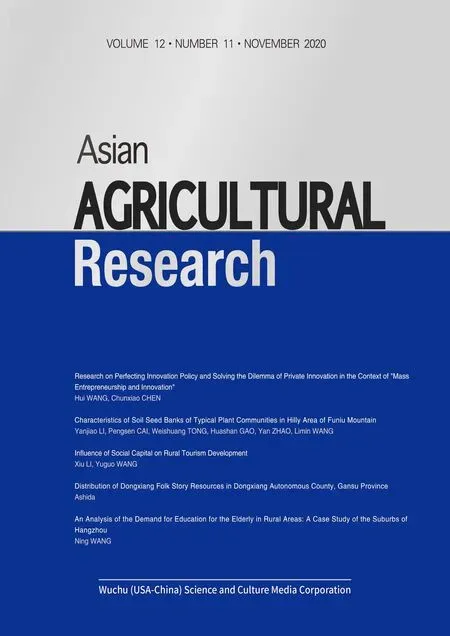An Analysis of the Demand for Education for the Elderly in Rural Areas: A Case Study of the Suburbs of Hangzhou
2020-12-30NingWANG
Ning WANG
Teaching Center of Zhejiang Open University, Hangzhou 310030, China
Abstract The education for the elderly is the last link of life-long education and an important part of spiritually providing for the aged. In the context of rural revitalization, this paper chooses the elderly in the suburbs of Hangzhou, an eastern developed city, as the survey object. Through the methods of questionnaire survey and quantitative statistics, this paper analyzes and introduces the basic situation of rural education for the elderly, the demand for participating in education for the elderly, the learning evaluation of education for the elderly and the problems existing in the education for the elderly in rural areas. On this basis, some brief conclusions and discussions are put forward.
Key words Rural areas, Education for the elderly, Demand
1 Introduction
Education for the elderly is the last link of life-long education, and it is an educational activity aimed at the elderly. Zhejiang is located in the developed areas of eastern China. In 2019, the per capita disposable income of urban residents in Zhejiang was 60 182 yuan, and the per capita disposable income of rural residents was 29 876 yuan. At the same time, the income ratio of urban and rural residents is 2.01, which has been shrinking for seven consecutive years. Hangzhou is the capital of Zhejiang Province, and it is also the area where the education for the elderly started earlier in China. The rural education for the elderly in this region is highly representative. It is in the context of rural revitalization that this paper strongly advocates the development of rural education for the elderly. Taking some villages and towns around Hangzhou as the research base, 200 rural elderly residents who participate in the education are selected as the subjects of the questionnaire survey, in order to accurately understand the current situation and needs of the rural elderly to participate in the elderly education, and get some research conclusions.
2 Basic situation of the participation of the elderly in education in rural areas
2.1 Sex and ageThe elderly in this study refer to those who are over the age of 60 after retirement. Among them, the male elderly account for 33.5%, the female elderly account for 66.5%, which is generally consistent with the relevant research, and the individual characteristics of women, including sociability, interest in learning content,etc.[1]. From the age distribution, the elderly aged 60-74 are the main participants, accounting for 92.5%; people aged 65-69 account for 36.4%; people aged 70-74 account for 27.3%; people aged 75-79 account for 6.8%; people aged over 80 account for 4.5%. From the point of view of age, the elderly aged 60-70 are the main participating groups; there are very few elderly people aged over 80, only some elderly people who are relatively hale and hearty participate in education.
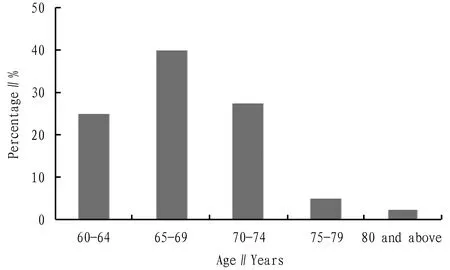
Fig.1 Age distribution of the elderly in rural areas
2.2 Education and incomeIn terms of education, the education level of the elderly in rural areas is low. Only 18.0% of the elderly have college education or above, while the majority have junior high school and senior high school education, accounting for 38.5% and 32.5%, respectively. The illiterate and the elderly with primary education account for 3.5% and 7.5%, respectively (Fig.2). Therefore, people with junior high school or senior high school education are the main groups to participate in the education for the elderly.
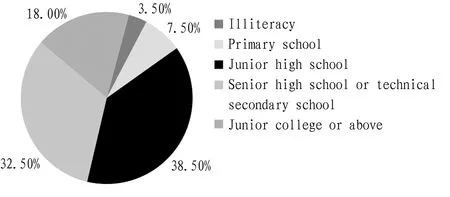
Fig.2 Distribution of education level of the elderly in rural areas
Hangzhou is located in the eastern economically developed area of the country, and the income level of rural residents is relatively high. 51.0% of rural residents have a monthly income of more than 4 000 yuan; only 18.5% of rural residents have a monthly income of less than 2 000 yuan; 22.7% of rural residents have a monthly income of 2 000-3 000 yuan. This is in line with the reality of Hangzhou (Fig.3). In recent years, with the extension of the process of urbanization to the suburbs, after going through rural demolition, the elderly in Hangzhou’s rural areas generally have demolition subsidies and rental income from resettlement houses, and some have village collective dividends. Their income level can make them afford part of the education fees.
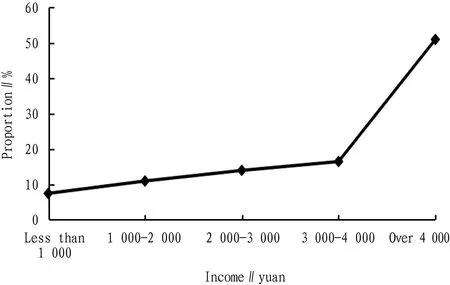
Fig.3 Monthly income distribution of the elderly in rural areas
2.3 DistanceIt is generally inconvenient for the elderly to move, and the distance will affect the enthusiasm of the elderly to participate in learning to a certain extent. In the survey, within 1 km is the most acceptable to the elderly. As the rural area is relatively remote, the elderly in the countryside usually move more than the people in the city, and a range of 1-2 km is acceptable, making it convenient for the elderly to go back and forth, and making them able to take care of their family and pick up children. At a distance of more than 3 km, due to the inconvenient transportation in rural areas, there is a small number of elderly people who choose to participate in learning, accounting for only 7.5% (Fig.4).
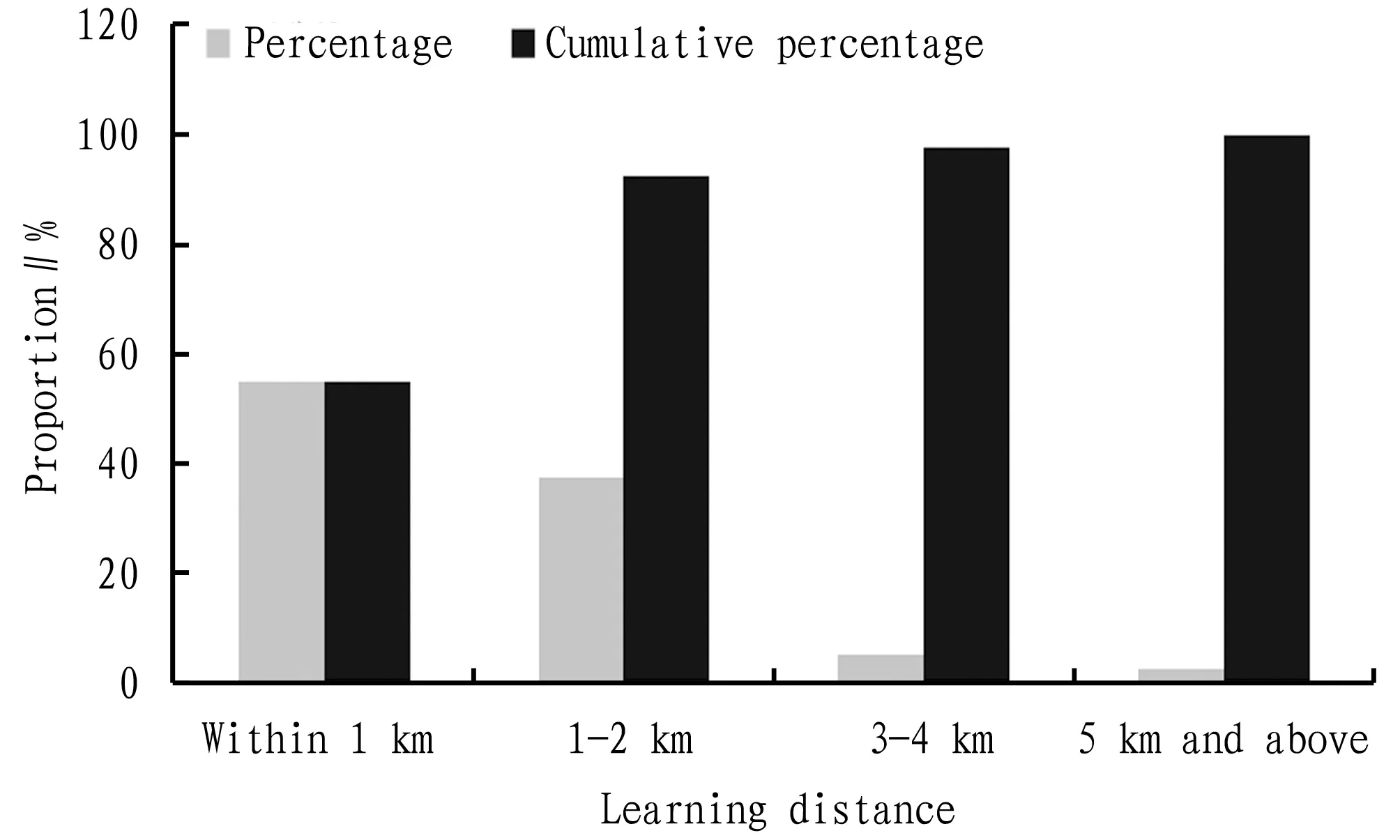
Fig.4 Distribution of the distance between the residence and the place of study for the elderly in rural areas
2.4 Living conditions and support of childrenWith regard to the current living situation of the elderly at this stage, the following options have been set: living with their husbands or wives, living with their children and husbands or wives, living independently and others. Half of them live with their husbands or wives, and 32.5% of them live with their children and husbands or wives, indicating that even in the developed area of Hangzhou, the proportion of the children of the rural elderly who go out to work is still large. In addition, the proportion of the elderly living independently is 15.0%. These elderly people need to be cared for, and allowing them to participate in education is also a way of providing for the aged in rural areas (Fig.5).
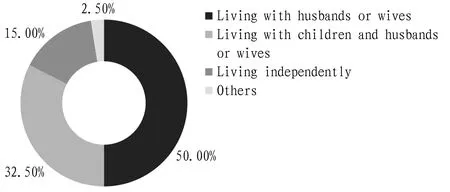
Fig.5 Distribution of living conditions of the elderly in rural areas
When the old people in the countryside get older, their working ability decreases, some farm work can no longer be done, and some people will have a sense of loss. In addition, some elderly people are lonely because their husbands or wives or children are not around. The survey shows that in the rural areas of Hangzhou, life is relatively well-off, and children are very supportive of their participation in community education or other activities for the elderly in order to help their parents get out of the emotional gap. According to the survey, 90% of the children support the elderly to participate in educational activities for the elderly, and only a few do not support the participation (Fig.6).
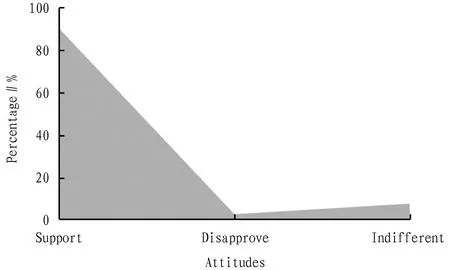
Fig.6 Distribution of children’s support for rural elderly to participate in education
3 Need of the elderly in rural areas to participate in education
In the investigation of the basic situation of community education, it is mainly carried out from three main aspects: learning environment factors, cost factors and teaching factors.
3.1 Purpose of participating in studyThere are many learning purposes for the elderly to participate in community education, involving interest, health, killing time and emotional communication. Multiple choice questions are set here, and statistics show the frequency of options and the share in 200 people. In the survey, it is found that most of them choose to meet their interests, increase their knowledge, improve their education and interact with others, which is also the main purpose of their participation in community education. On the other hand, the survey results show that the proportion of people choosing killing time and re-employment is only 16.0% and 5.0%, indicating that the main purpose of rural elderly participation in education is positive, not just to make up for the emptiness of life or to increase income (Table 1). Therefore, it is necessary to expand the teaching content based on the diversified needs of the elderly, to meet the high-level educational needs of the elderly[2].
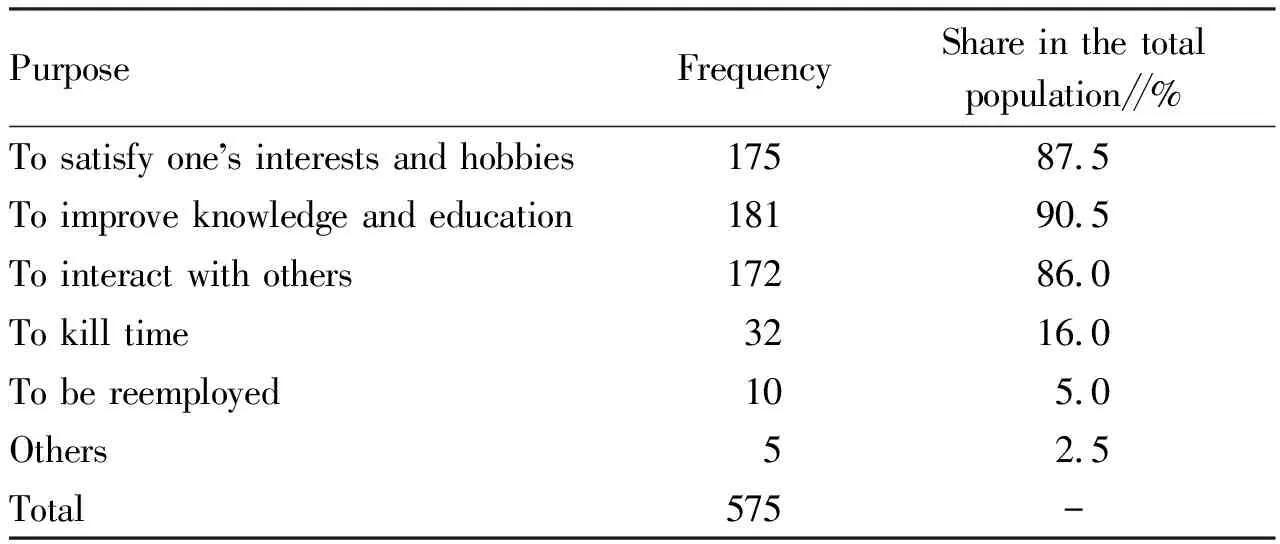
Table 1 Learning purpose of rural elderly participating in education
3.2 Opportunities to participate in learningAs for the learning opportunities for the rural elderly to participate in community education, the survey found that there are still many opportunities for the rural elderly in Hangzhou to participate in community education, the proportion of people who choose "a great many" reaches 40%, and those who choose "many" account for 30% (Fig.7). The reasons are as follows: the financial support of big cities is large, and the government invests more in the field of education. For example, the township teaching points of Zhejiang Radio and Television University and some community schools provide education for the elderly, and there are many resources for education, including various health-preserving classes, hobby classes, and so on. Many rural elderly are attracted to actively participate in such education. However, in some relatively remote areas, there are few opportunities to participate in education for the elderly, and the imbalance in the supply of education still exists.
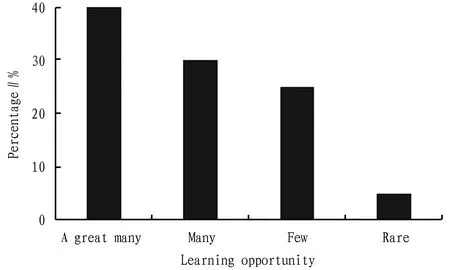
Fig.7 Distribution of educational opportunities for the elderly in rural areas
3.3 Willingness to pay for individual coursesMany courses in education for the elderly are free, but some may be charged at a small fee. In the survey of the fee standard of a single course, it is found that the lower the fee is, the more popular it is, but for good courses, the rural elderly are also willing to pay a certain fee. In terms of willingness to pay for a single course, 500 yuan is a limit, a cumulative percentage reaches 93.5%, and few elderly people are willing to pay for a single course at more than 500 yuan (Fig.8).

Fig.8 Distribution of educational opportunities for the elderly in rural areas
4 Learning evaluation of the elderly in rural areas
4.1 Evaluation of the importance of learningFor the elderly rural residents, there is basically no job demand, is it optional to participate in education? From the results of this survey, 96.5% of the rural elderly think it is important to participate in education for the elderly, indicating that the elderly have fully realized and experienced the positive impact of education on them (Fig.9). Therefore, to do a good job in education for the elderly is not only an important livelihood project of the Party and government, but also the expectation of the public, and a concrete action to promote social harmony[3].
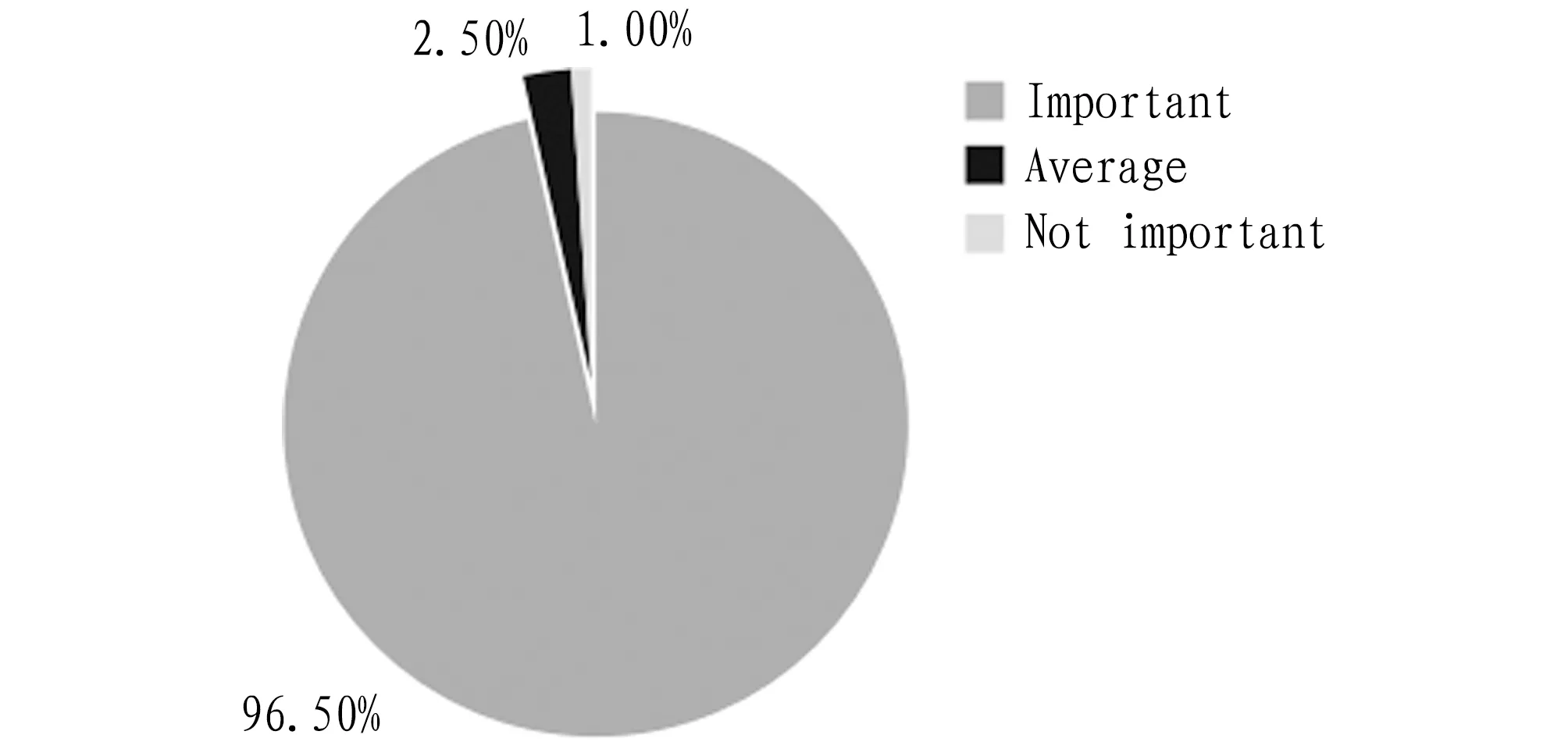
Fig.9 Distribution of the evaluation of the importance of learning among the elderly in rural areas
4.2 Evaluation of learning satisfactionThe satisfaction of education for the elderly can help us to understand the current situation of the participation of the elderly in education, whether it meets their needs, so as to provide motivation for the improvement of education for the elderly, and promote the innovation and development of education for the elderly. In the survey, it is found that 73.5% of the rural elderly are very satisfied with participating in education, and only 11.1% are dissatisfied with the education for the elderly. On the other hand, this also shows that Hangzhou’s efforts in promoting education for the elderly have been recognized by the elderly (Fig.10).
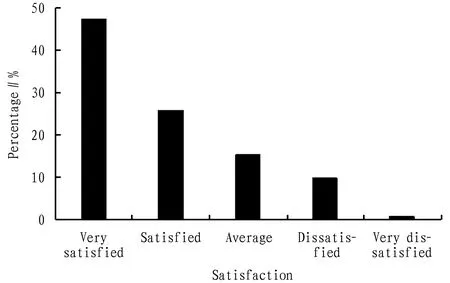
Fig.10 Distribution of the evaluation of learning satisfaction of the elderly in rural areas
4.3 Evaluation of teaching contentTeaching content is also a consideration for the elderly to participate in education for the elderly. If the teaching content is attractive and meets their needs, the enthusiasm for participation will be relatively high. The statistics of the survey use multiple-choice topics, and 85.0% of the people still approve of the teaching content, indicating that the course can meet the needs of the elderly. The problems mainly include the lack of course content and the content inconsistent with the needs of the elderly, accounting for 22.5% and 15.0%, respectively (Table 2).
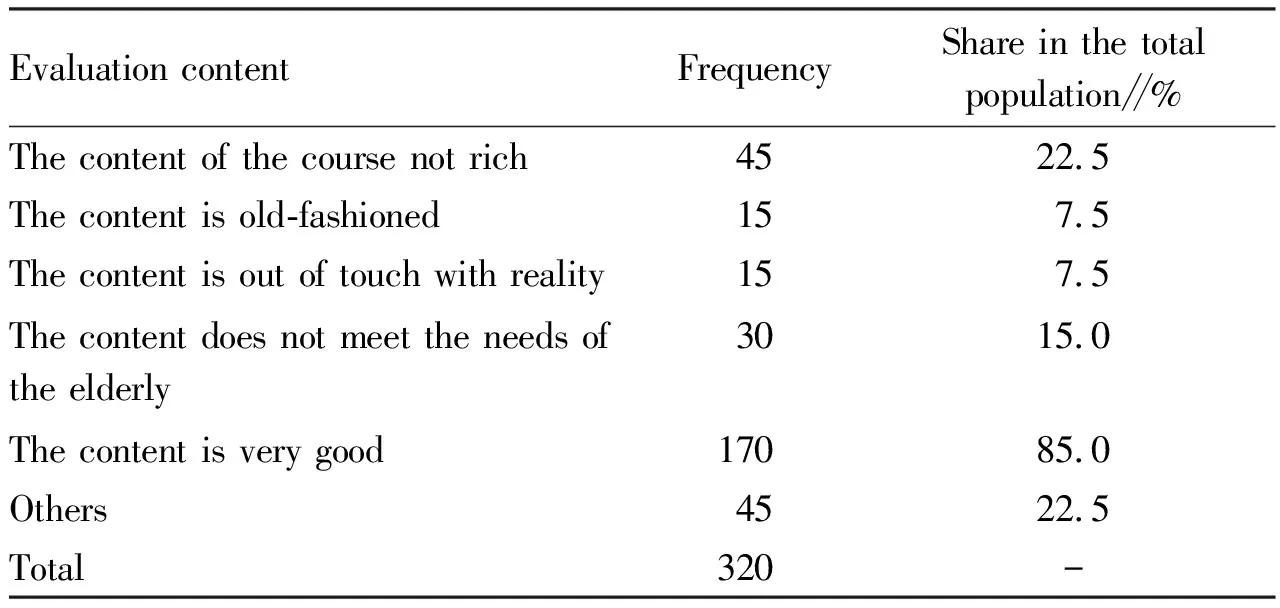
Table 2 Evaluation of teaching content by the elderly in rural areas
4.4 Evaluation of teachersThe quality level of teachers will not only directly affect the development of education for the elderly, but also affect the attractiveness of education for the elderly to the participants. It is generally believed that the strength of teachers in rural areas will be poor. However, according to the results of this survey, 73.5% of the people are satisfied with the teachers, which shows that, on the one hand, there are relatively abundant teachers in the education for the elderly in Hangzhou; on the other hand, the rural elderly do not have high requirements for teachers, and they are often satisfied as long as they have a classroom for learning and communication (Fig.11).
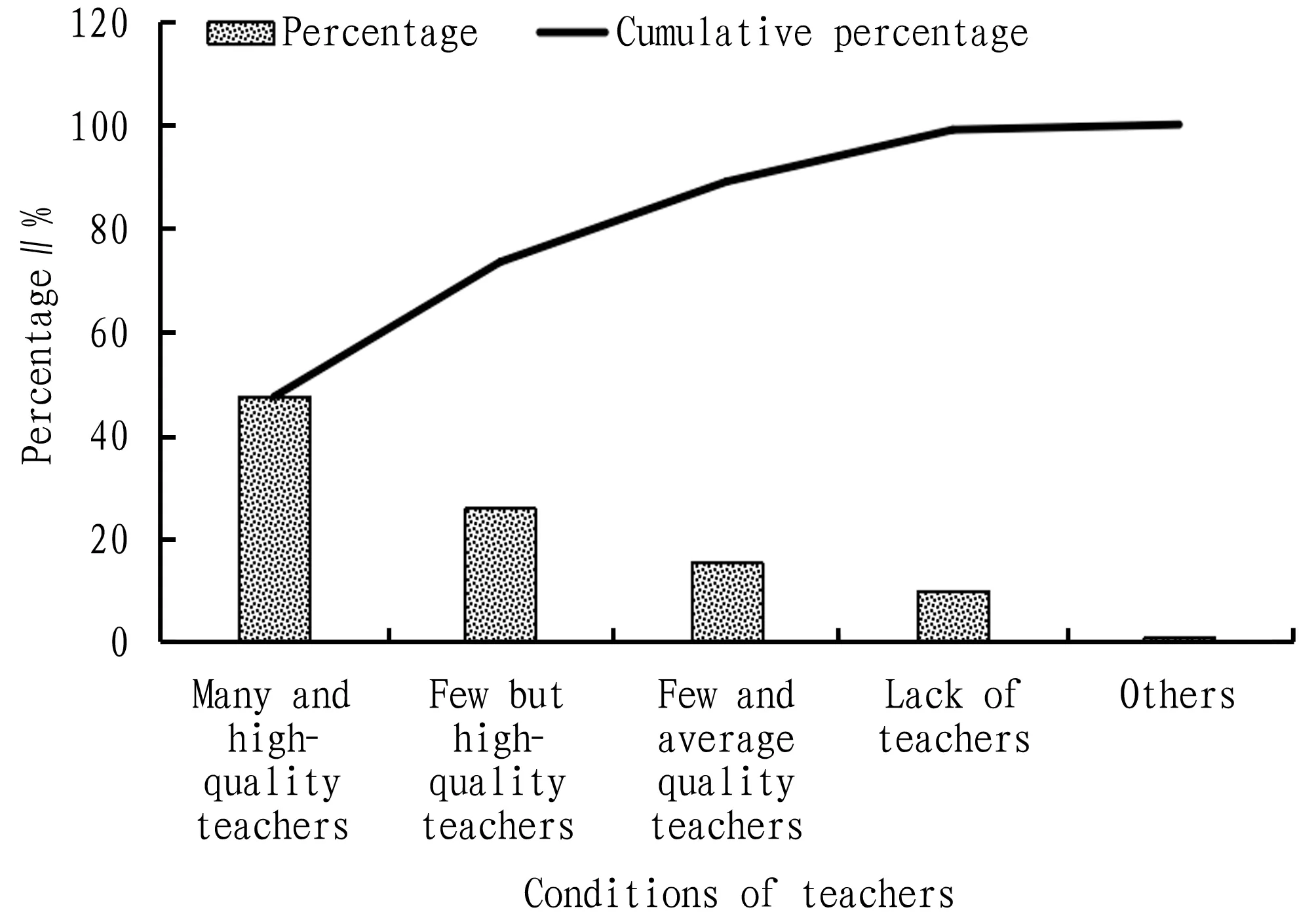
Fig.11 Distribution of evaluation of teachers by the elderly in rural areas
5 Problems in the education for the elderly in rural areas
5.1 DissatisfactionMost of the elderly in rural areas are satisfied with the education for the elderly, but in the process, there is still a survey of dissatisfaction with education for the elderly, which is a multiple choice question. The survey results show that what they are most dissatisfied with is the low teaching quality, accounting for 30.0%, followed by the long distance and unreasonable curriculum arrangement (Table 3). It shows that the elderly pay high attention to teaching, and the key point of the development of education for the elderly is still to improve the quality of teaching.
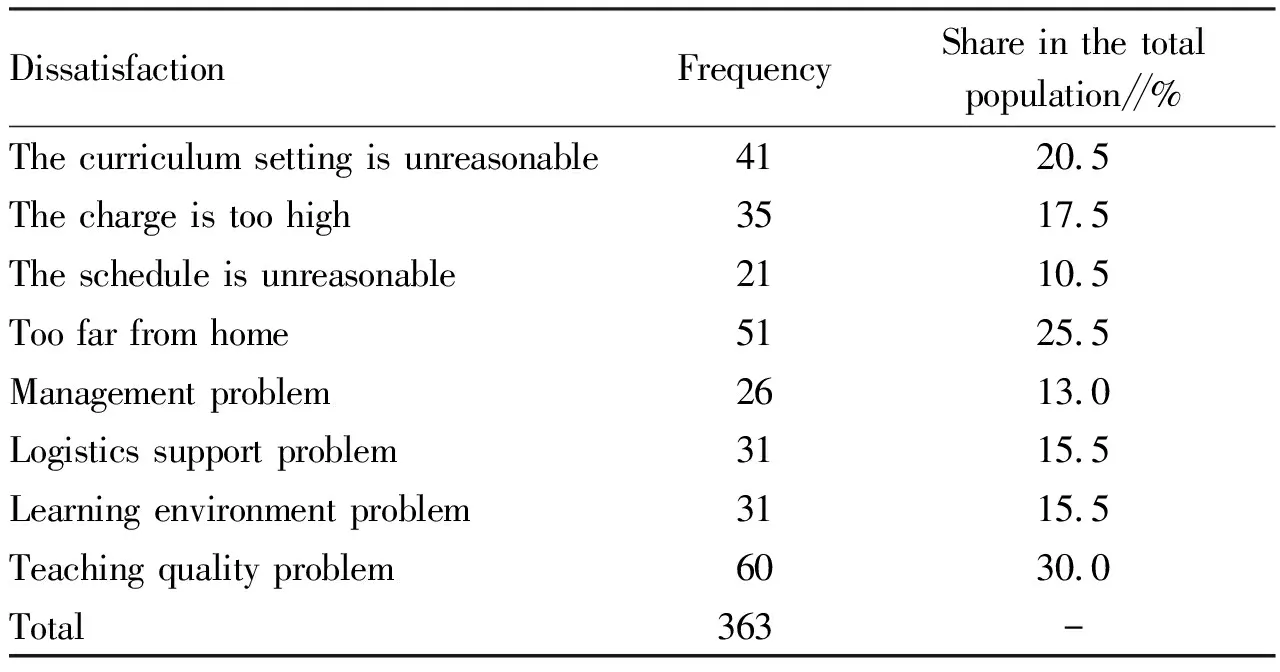
Table 3 Dissatisfaction of the elderly in rural areas with education
5.2 Areas that need to be improvedThe survey also sets the question of which areas of education for the elderly need to be improved. The survey results show that the problems are mainly focused on educational content and educational funds, with the proportion of choices reaching 42.5% and 40.0%, respectively. This shows that the elderly in rural areas still hope that society can invest more money to improve the educational content for the elderly and improve the environment of educational facilities, which will be more beneficial to their participation in community activities (Table 4).

Table 4 Areas for improvement in education for the rural elderly
5.3 Views on teaching problemsHowever, there are still some areas that need to be improved in terms of teaching content, participation and not in line with the learning habits of the elderly, with a proportion of 15.0%, 12.5% and 7.5%, respectively (Fig.12).
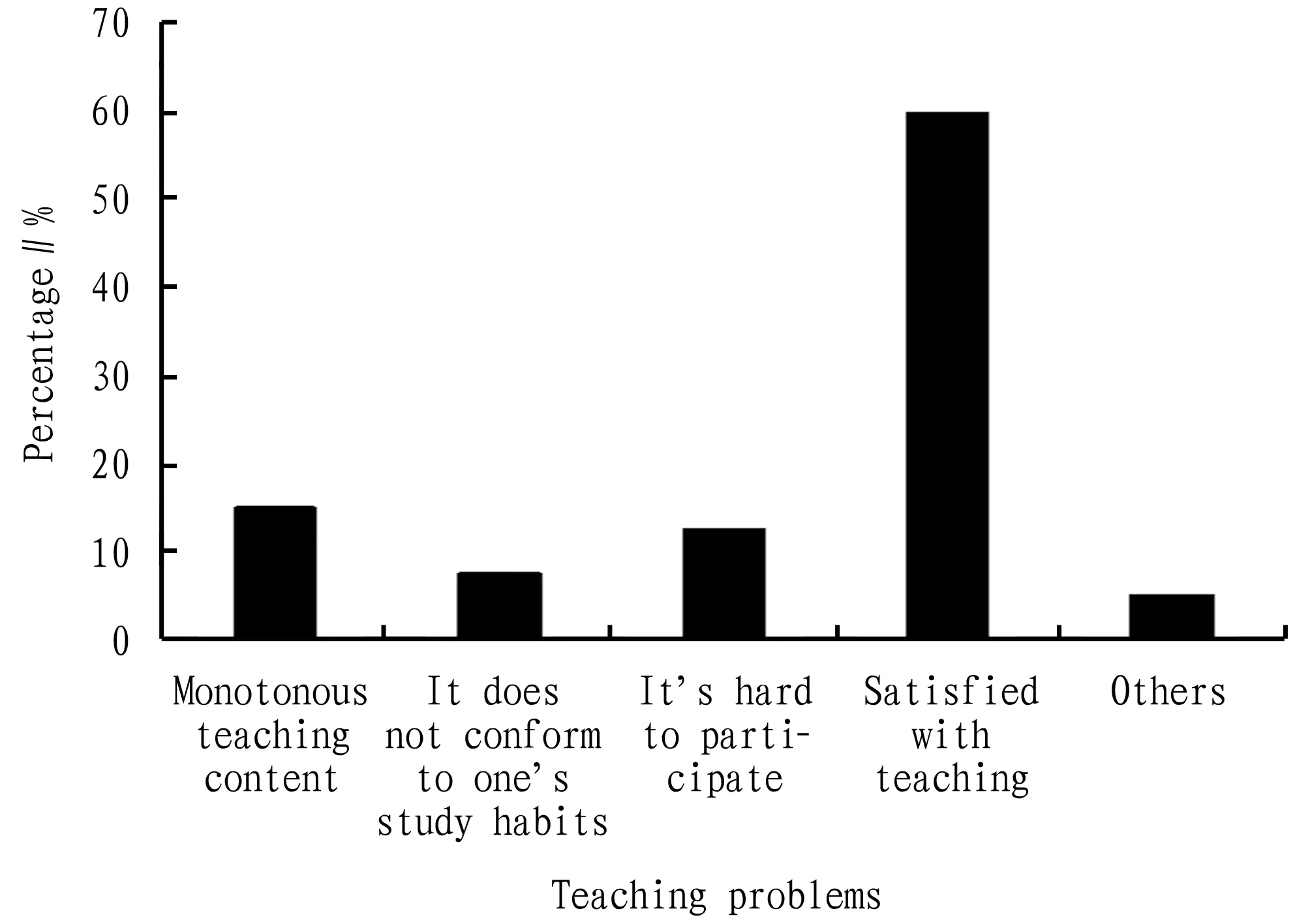
Fig.12 Distribution of views on teaching problems among the elderly in rural areas
6 Conclusions and discussions
Based on the above survey and statistical analysis, the following brief conclusions and research discussions are drawn.
(i) Rural elderly have a strong demand for education for the elderly, but there is still an imbalance in education. In recent years, with the improvement of people’s living standards, spiritually providing for the aged has been recognized by everyone, and the demand for education for the elderly has increased. Judging from the results of this survey, in a developed area like Hangzhou, most elderly people think that it is very important to participate in education and it should become a part of their old age life. At the same time, in some remote areas, rural elderly have fewer opportunities to participate in education, and the imbalance in rural areas still exists. Therefore, more support and help should be provided to the educational services of the elderly in rural areas in order to reflect the balance and fairness of education.
(ii) The distance between the residence and the school and the support of the family are very important. The rural elderly are willing to pay for education, but they still hope that the government will provide more financial support. Before the investigation and research on the educational needs of the elderly in rural areas, our project team also conducted a survey of the relevant contents of the education for the elderly in the urban area of Hangzhou[4]. After comparison, it can be found that for the elderly in urban or rural areas, the educational support of their children in the family is very important, and most of the elderly who participate in the education for the elderly have the support of their children. However, compared with the urban elderly, the rural elderly live farther away from the school, and the transportation is relatively inconvenient. Although the elderly are also willing to pay a certain amount of money for education, they are less willing to pay than the urban elderly due to the limitation of their income level. Therefore, it is hoped that the government will provide more financial support to improve the facilities of education for the elderly in rural areas. At present, there is a lack of funds for education for the elderly in towns and villages, and most of the financial allocations in towns and villages can not meet the needs of local education for the elderly. The problem of "the last kilometer" of education for the elderly in rural areas is still unsolved. In order to achieve full coverage of education for the elderly, the government and all sectors of society still need to invest more funds to support, and there is a long way to go.
(iii) The rural elderly speak highly of education, and the existing problems mainly focus on the quality of education. The results of this survey show that the overall evaluation of the rural elderly on learning satisfaction, teaching content, teachers and so on is still good. This shows that the overall development of education for the elderly in rural areas of Hangzhou is still good, the educational requirements of the elderly in rural areas are not too high, and the dissatisfaction with the education for the elderly in rural areas is still focused on the quality of education. Different from general education, the educational starting point of the elderly group is different, their social experience and learning background are relatively rich, but their consumption power is low and the heterogeneity is strong. However, the current development situation is that, restricted by educational resources, the products of rural education for the elderly are simple, which can not meet the diversified learning needs of education for the elderly. Therefore, to expand high-quality teaching resources and improve the quality of education is the top priority of rural education for the elderly. With the help of Internet technology, distance education and other modern teaching means, we can realize the sharing of urban educational resources with rural areas, and provide more abundant courses for rural education for the elderly. In practice, we can organically integrate many contents such as rural civilization, environmental protection, cultural inheritance, morality and ethics, health preservation, community service, leisure and entertainment into the curriculum of education for the elderly, so as to further enrich the teaching content and improve the teaching conditions. Only by better meeting the educational needs of the elderly in rural areas can we enhance the sense of participation, achievement and well-being in rural education for the elderly, and promote the common sustainable development of the elderly and society.
杂志排行
Asian Agricultural Research的其它文章
- Influence of Social Capital on Rural Tourism Development
- Research on Dairy Consumption of Rural Residents in Yanqing District of Beijing
- Exploration on Ecological Compensation Mechanism of Family Farm
- Distribution of Dongxiang Folk Story Resources in Dongxiang Autonomous County, Gansu Province
- Comparison of Spatial Forms between Villages under Different Cultures in Jiangxi Province: Taking Meipi Village and Zhuqiao Village as Examples
- Resident Relocation of Wulingyuan World Natural Heritage Site Based on Community Participation Theory
